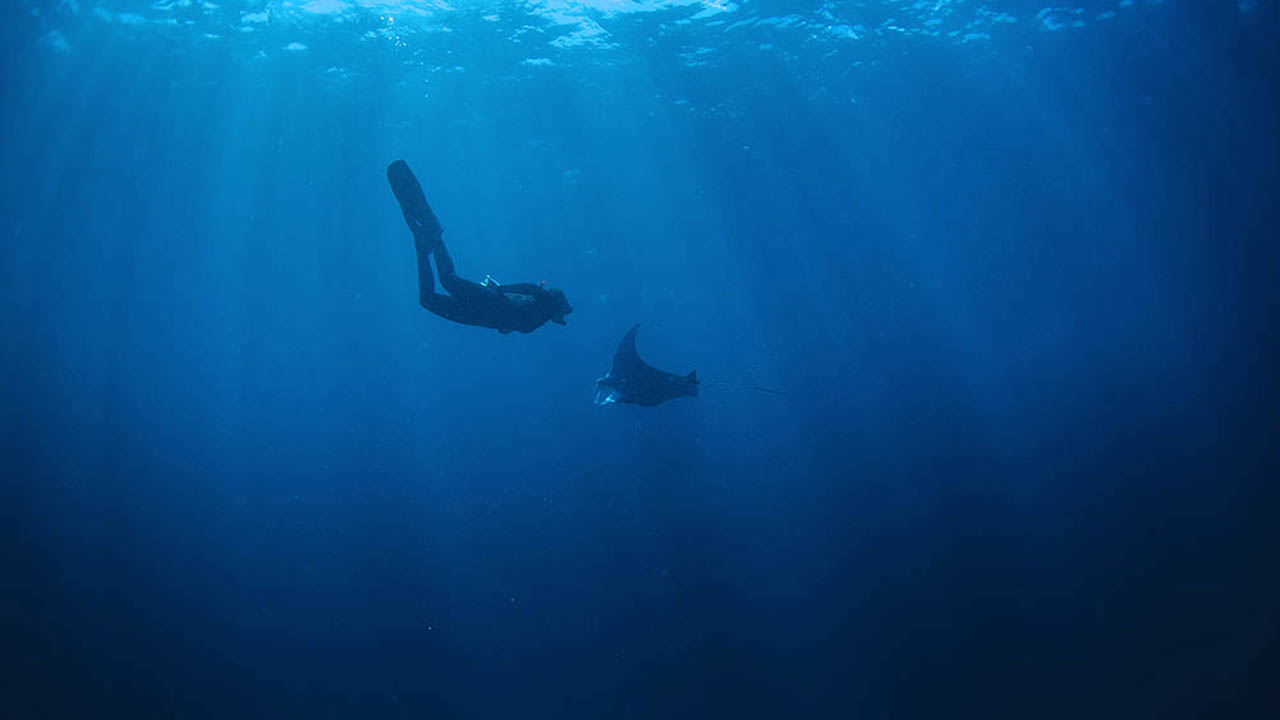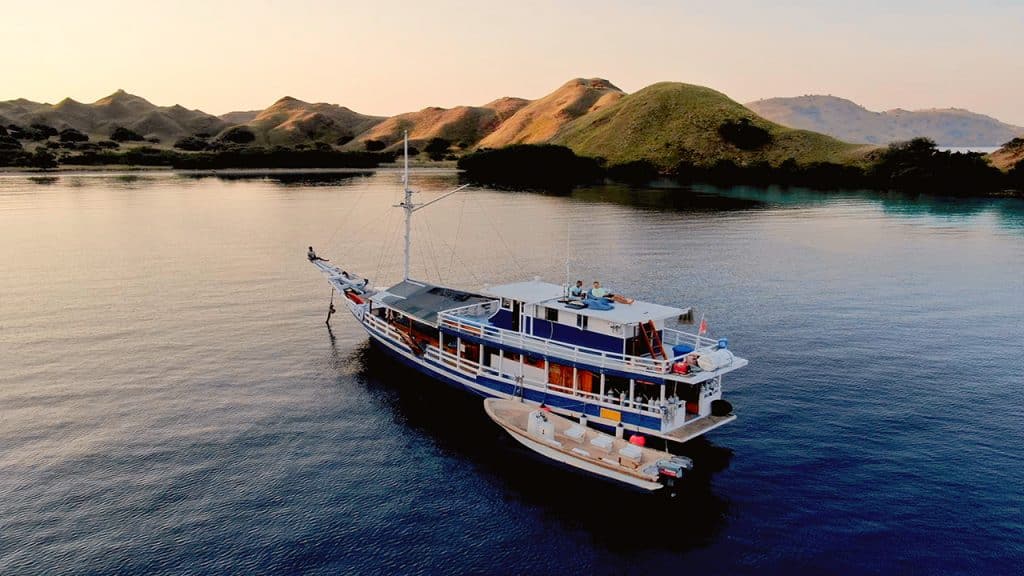How to Dive with Manta Rays
When a manta glides above you, so close you think they might touch you, it feels like time is standing still. These creatures never get boring to watch even after thousands of dives with them. No wonder many of our divers request to dive with mantas!
Manta Rays have the largest brain to body ratio of all fishes and you can see intelligence in their eyes.
Here is a tip: Try to look them in the eyes and you will notice that they often come closer to check you out.
There are two proven species of mantas; Ocean Manta (Mobula Birostris) and Reef Manta (Mobula Alfredi). We mostly encounter the Reef Manta in the waters of Komodo. They can get up to 5.5 meters wide and we are lucky to be able to see them almost all year around. Most commonly we see them at Manta Point (Karang Makassar) and Mawan island. Down in the South they also visit Manta Alley, a site only visited by our liveaboard. Sometimes we get a surprise visit at our other dive sites too, especially during the rainy season December – March.
Just like the Blacktip Reef Shark, mantas need to constantly to have water flowing through their gills to get oxygen. Actually mantas are negatively buoyant so if they stopped swimming they would sink to the bottom. Mantas spend up to 8 hours per day at cleaning stations, where different kinds of cleaning fish help them get rid of parasites, infections and dead skin. When there is a current they swim against it to remain over the cleaning station.
Manta Rays Behaviour
We also observe other behavior such as manta trains; where a large female is followed by a line of males trying to get her to choose them. When feeding they use their cephalic fins (attached to sides of the mouth) to funnel zooplankton into to their open mouth. When they want to travel faster they will twist these fins into two points, making them look like Devil Rays. There is a not yet proven theory that the cephalic fins also are used for communication with each other, a little like the hand signals us scuba divers use.
Manta Ray Conservation
Mantas are classified as a vulnerable species by the IUCN list. They have low fecundity, meaning they reproduce slowly. Even though fishing and exporting mantas is no longer allowed in Indonesia since 2014, they are still fished illegally and victim to by-catch. Just like shark fins, the gill rakes of the manta rays are sought after to make non-scientifically proven Chinese medicine. However in a money-oriented perspective, a live manta is much more valuable alive to Indonesia’s tourism sector.
Education and manta research are important parts to help protect manta rays. Each manta can be identified by their belly markings, they are individual just like our thumbprints. By identifying mantas, their travel routes can be mapped thereby conservation efforts can be made in critical areas. If you manage to get a good image you can upload it to Marine Megafauna Foundation and Manta Watch.
We always brief our guests on Code of Conduct for how to interact with mantas.
In a nutshell:
Stay low, keep 3m distance, do not enter cleaning stations, don’t touch or chase them. By staying calm and still we have the chance of them getting closer to us.
Trips to see manta rays can be accessed through Daily Trips or if you want to spend more time exploring and get more fun with them consider taking Liveaboard the best option.





Leave A Comment